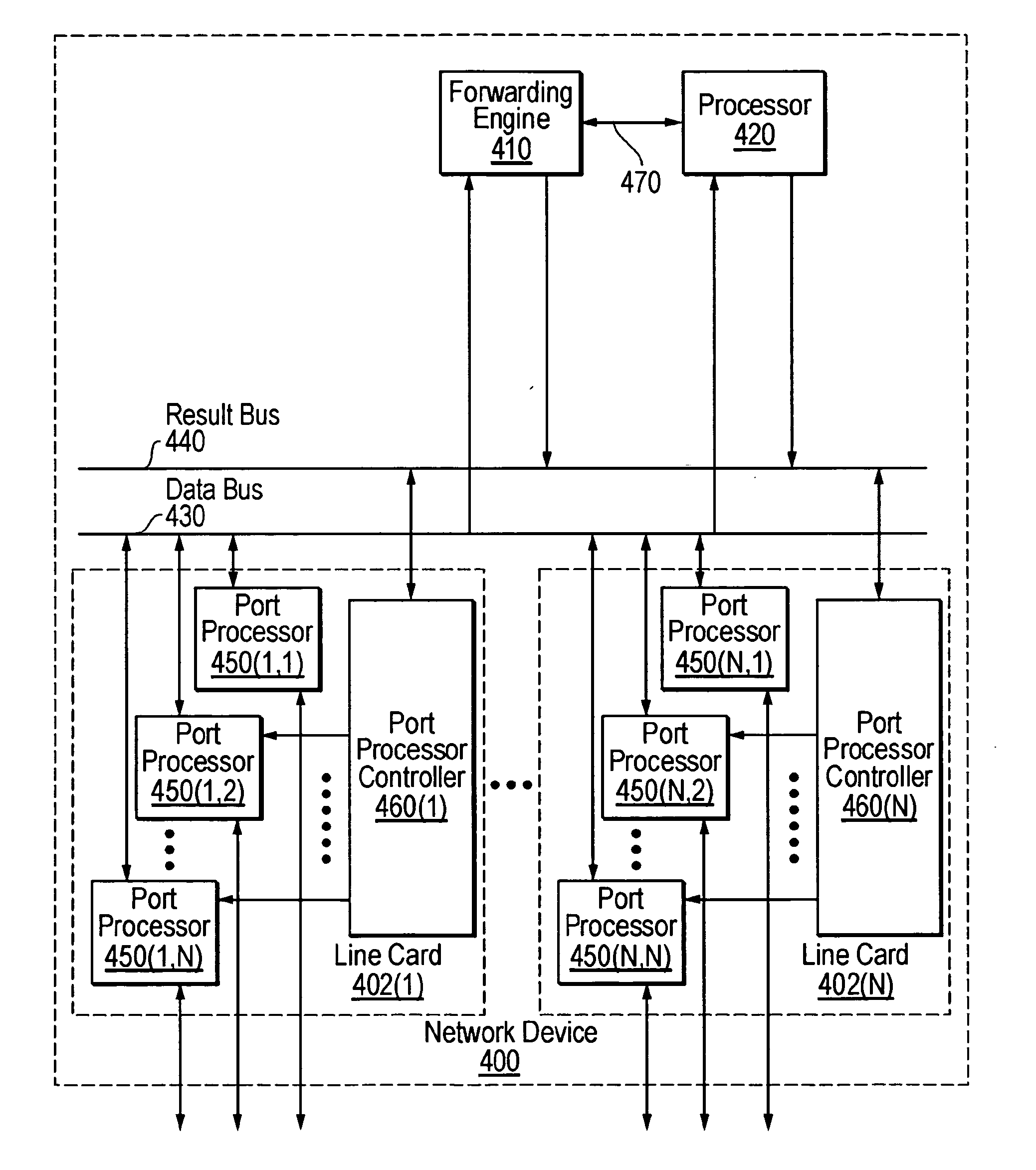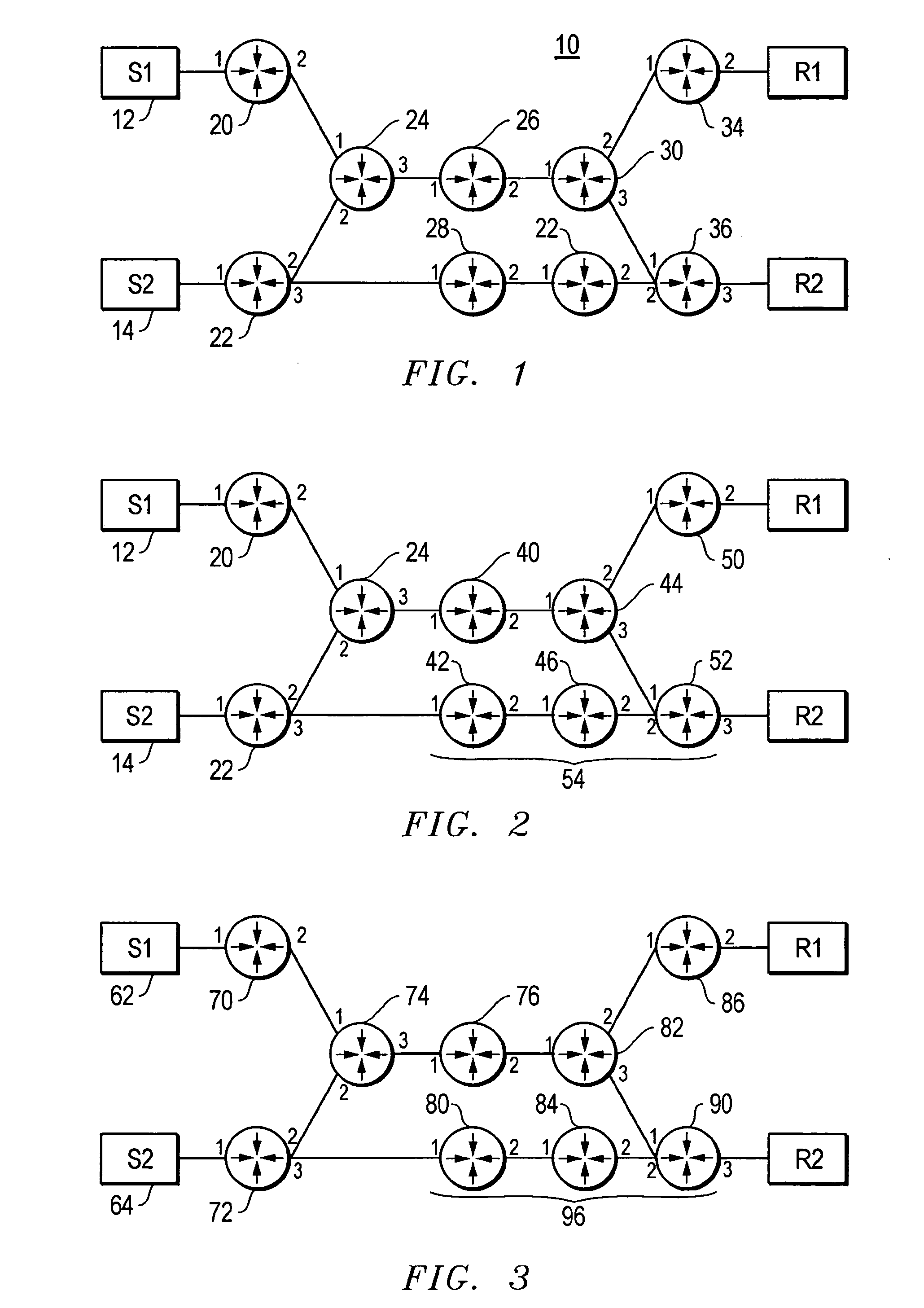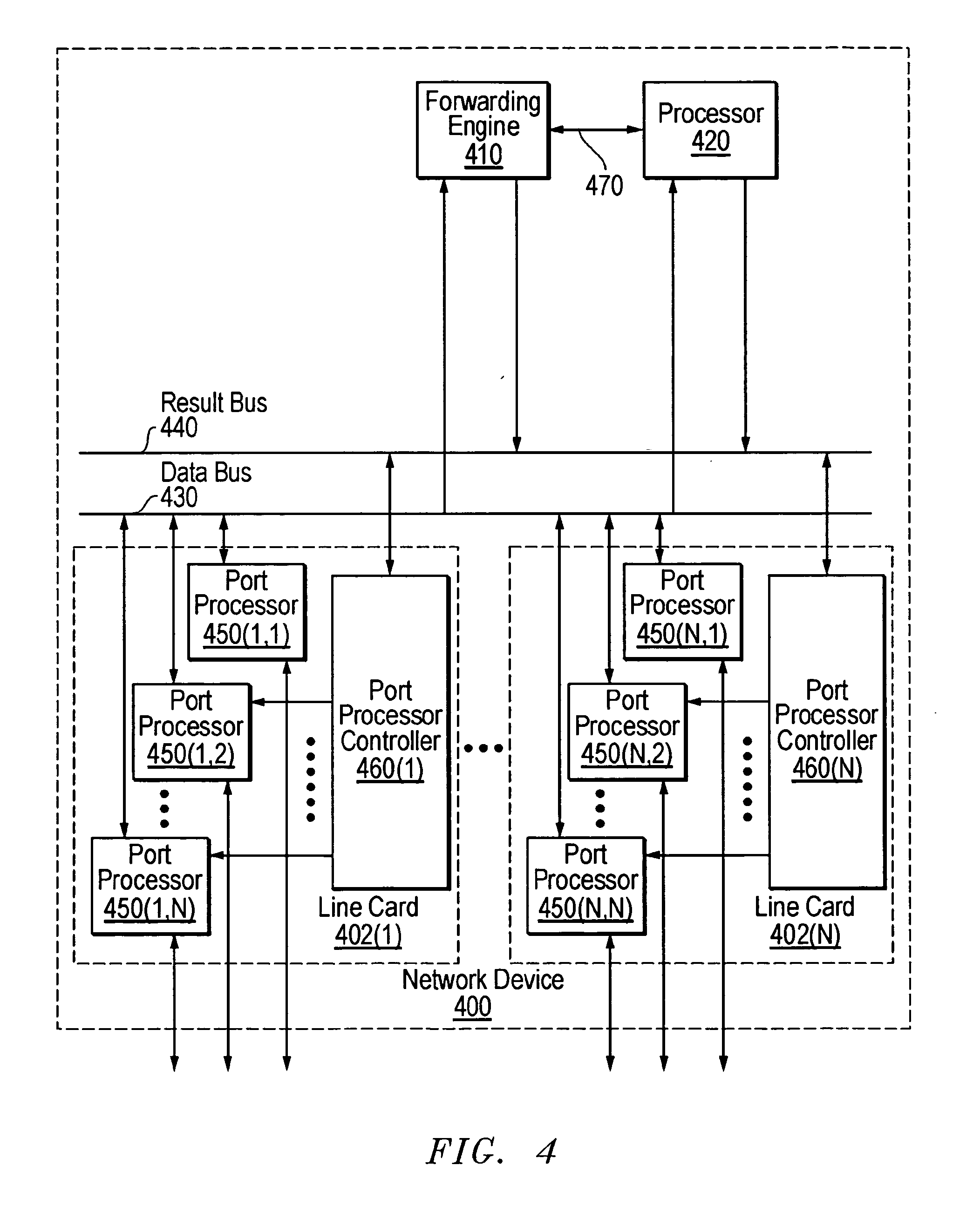PIM sparse-mode emulation over MPLS LSP's
a sparse-mode emulation and sparse-mode technology, applied in data switching networks, data switching details, multiplex communication, etc., can solve the problem that the source or shared distribution tree cannot be formed through mpls networks, the core router is not pim enabled, and the shared distribution tree may not be the fastest or most efficient data communication path
- Summary
- Abstract
- Description
- Claims
- Application Information
AI Technical Summary
Problems solved by technology
Method used
Image
Examples
Embodiment Construction
[0031] Rather then using a P2MP LSP in a MPLS network for connecting multiple receivers on one side of the MPLS network to a shared distribution tree rooted at an RP on the other side of the MPLS network, the present invention contemplates building a P2P LSP between the ingress MPLS enabled router coupled directly or indirectly to the RP and each egress MPLS enabled router coupled directly or indirectly to a receiver that receives or seeks to receive multicast data packets from the RP. Stated in other words, rather then using a P2MP LSP to emulate a shared distribution tree in an MPLS network, the present invention contemplates using multiple P2P LSPs to emulate a shared distribution tree in an MPLS network.
[0032]FIG. 3 illustrates a network employing one embodiment of the present invention, it being understood that the present invention should not be limited to the network shown in FIG. 3. Network 60 includes sources 62 and 64 coupled to hosts H1 and H2 via routers 70-90. Routers ...
PUM
 Login to View More
Login to View More Abstract
Description
Claims
Application Information
 Login to View More
Login to View More - R&D
- Intellectual Property
- Life Sciences
- Materials
- Tech Scout
- Unparalleled Data Quality
- Higher Quality Content
- 60% Fewer Hallucinations
Browse by: Latest US Patents, China's latest patents, Technical Efficacy Thesaurus, Application Domain, Technology Topic, Popular Technical Reports.
© 2025 PatSnap. All rights reserved.Legal|Privacy policy|Modern Slavery Act Transparency Statement|Sitemap|About US| Contact US: help@patsnap.com



